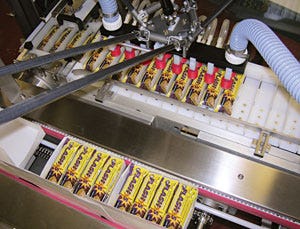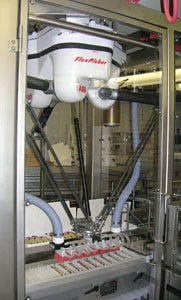Robotic loader improves flexibility
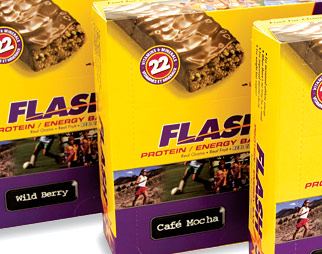
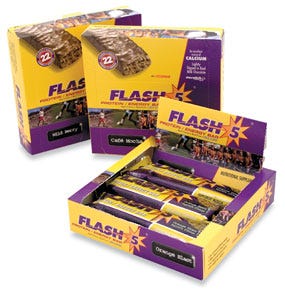
pdx1004nutri2
A new robotic carton loader at Nutri-Nation Functional Foods, Port Coquitlam, BC, has dramatically improved productivity and flexibility. Nutri-Nation is a contract manufacturer of private-label, functional-food products specializing in energy bars, sports nutrition bars, as well as total meal-replacement bars.Nutri-Nation differs from many private label manufacturers in that it does not simply draw from a stock set of products that are sold to multiple customers. Every formulation is unique, and customers have access to the company's inhouse research and development team to create bars that fit their individual product concepts.
Nutri-Nation began operations in 1998, and now has three production lines, but it was packing its bars into cartons manually. “This had become a problem,” says president Richard Schroeder. “Although we produce trailer-load quantities for many customers, we also accept relatively small orders, some as small as 50,000 bars. Because we run many different bar sizes, we sometimes have a number of changeovers during a single day. Plus, we needed different numbers of workers as our operations changed, so we sometimes end up with more people than we could use, which was very inefficient. We had reached a point, where we needed an automated carton loader.”
Robot loads up to 350 bars/min
After investigating what was available, Schroeder decided to install an Model LJ SRT robotic top loader from Propack Processing & Packaging Systems Inc. that is equipped with a Model IRB 360 pick-and-place robot from ABB Inc. The machine can run up to 350 bars/min. “We had been discussing this with Propack, and they were
pdx1004nutri6 |
pdx1004nutri5 |
The pick-and-place robot picks up a set number of bars with vacuum cups and places the bars in the cartons.The robot synchronizes with the movement of the bar-indexing conveyor to maximize the time that the robot is in contact with the bars. |
familiar with our facility, so we decided to proceed with them,” says Schroeder. “We have a small plant and space was at a premium, so the first thing they had to do was come out, take measurements and figure out how to fit the loader into the available space. It turned out that we had to put the controls for the machine in another room.”
Cartons are erected in another area of the packaging room and are delivered to the loader on an overhead conveyor and down a Propack-designed slide chute that delivers them to the intermittent-motion loader. This overhead delivery turned out to be very beneficial, because it opened up the area around the loader and provides the operator more access. The cartons enter an indexing lug conveyor that places them exactly in the loading zone of the robot during the pick-and-place process.
Simultaneously, the bars are delivered from a flow wrapper to a product-infeed conveyor that runs at a right angle to the loader's direction of movement. From this conveyor, the bars are metered into the loader's product-indexing conveyor, which runs parallel to the carton conveyor and also places the bar very precisely for pickup. A photo eye on the product-infeed conveyor checks to make sure that there is a gap between the bars, so that there will never be two bars placed into a space on the indexing conveyor. The indexing conveyor incorporates an on-demand system, so it only moves when bars are present. If there is some delay in bars reaching the indexing conveyor, it stops.
As the cartons and bars travel through the loader, the pick-and-place robot synchronizes with the movement of the bar-indexing conveyor to maximize the time that the robot contacts the bars, optimizing the bar-handling process. In this operation, the robot picks up a set of bars with vacuum cups and places the bars in the cartons.
The indexing conveyors continue indexing while the cartons stop during loading, although they can also be loaded while moving. The system can be set to run different numbers of bars and cartons. For example, in the photos shown here, it picks up eight bars at a time and places four bars in each of two cartons on each cycle, and it performs two cycles before the cartons are released. Thus, each carton contains eight bars. These numbers can be changed to meet the requirements of the products being run. Nutri-Nation runs cartons containing five, six, seven, nine, 12, 16 and 100 bars/carton on this machine.
The top loader incorporates ABB's recipe parameter program and is controlled by an Allen-Bradley PLC with an A-B 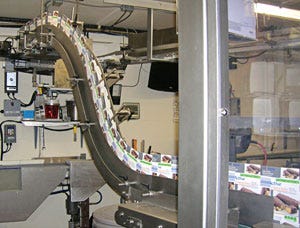
pdx1004nutri4
PanelView operator panel from Rockwell Automation. The PLC maintains the recipes for all of the products in memory, and the operator can recall them at a touch.“Propack has done an excellent job for us,” says Schroeder. “We installed the machine, and Propack engineers came out to help with the startup and to train our people. We had a few problems at the start, but Propack solved them, and the system has worked very well since then. In terms of labor saving, I estimate that we use two less people now than when we were hand packing.
“With the ever-changing diet and nutrition market, it is important to partner with a manufacturer that can respond quickly to new trends and technology,” he adds. “We take great pride in creating bars that are nutritionally sound, while also paying close attention to the taste experience. The end consumer can be drawn in by a product's packaging and marketing twist, but repeat purchases depend heavily on flavor and texture appeal. We know this is essential for the long-term market success of our customers' products.”
More information is available: |
Propack Processing & Packaging Systems Inc., 905/563-9400. www.propack.on.ca |
ABB Robotics, 248/391-8763. www.abb.com/robotics |
Rockwell Automation, 414/382-2000. www.rockwellautomation.com |
About the Author(s)
You May Also Like
